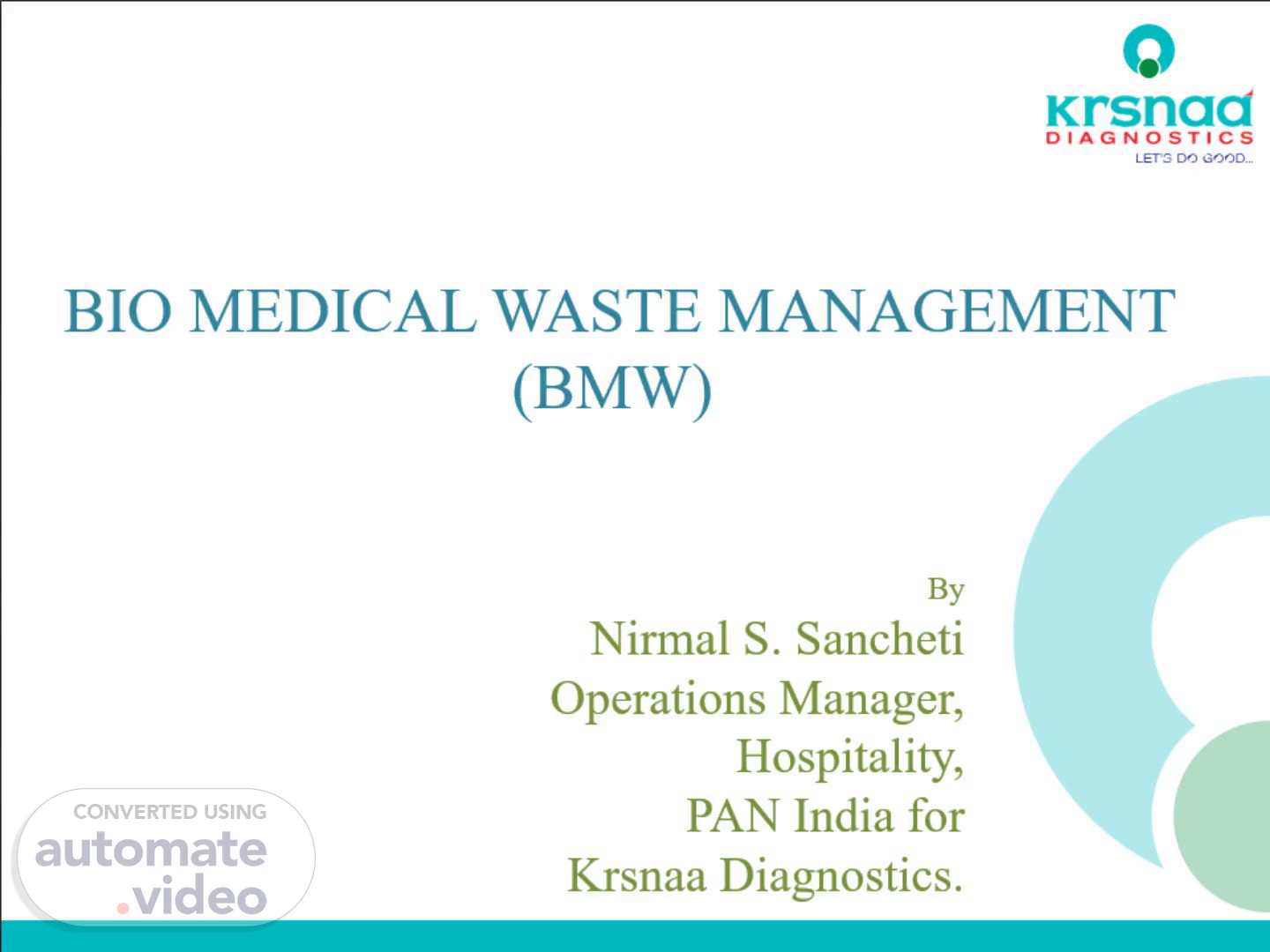Scene 1 (0s)
[Audio] Effective Bio Medical Waste Management, or BMW, plays a crucial role in preventing infection and injury to medical personnel, patients, and waste handlers. This critical topic deserves our attention as we embark on our journey to understand its significance..
Scene 2 (16s)
[Audio] The focus points of this presentation will cover what biomedical waste is, why its management is crucial, the categories of people who are at risk of infection, the steps involved in effective management, segregation of biomedical waste, and the principles of waste management..
Scene 3 (34s)
[Audio] Bio medical waste refers to any solid or liquid waste, including its container and any intermediate product, that is generated during the diagnosis, treatment, or immunization of human beings or animals. This definition encompasses a wide range of materials, such as used needles, syringes, gloves, masks, and other disposable items used in healthcare settings..
Scene 4 (56s)
[Audio] Injuries from sharps can lead to infections among hospital personnel and waste handlers. Poor infection control practices and waste management can result in nosocomial infections among patients. The risk of infection extends beyond the hospital walls, affecting waste handlers, scavengers, and the general public living nearby. Furthermore, there is a risk of infection associated with hazardous chemicals and drugs handled by individuals at various levels. Moreover, "disposable" items are often repackaged and resold without proper washing, posing additional risks. Finally, the improper disposal of bio medical waste can lead to air, water, and soil pollution, resulting in environmental hazards..
Scene 5 (1m 38s)
[Audio] Medical and paramedical staff, sanitation workers, and patients are all categories of people who are exposed to risk in infection. The medical and paramedical staff are at risk because they may come into contact with infected patients or contaminated equipment. Sanitation workers are also at risk because they handle bio-medical waste, which can contain infectious agents. Patients are at risk because they may contract nosocomial infections if proper infection control measures are not taken..
Scene 6 (2m 8s)
[Audio] Effective bio medical waste management requires several steps. These steps include surveying the waste generated, identifying the types and quantities of waste produced, segregating the waste into different categories, collecting and categorizing the waste according to its type and quantity, storing the waste in a designated area until it can be transported to a treatment facility, keeping the waste secure and protected from contamination during transportation, and treating the waste using methods such as incineration, autoclaving, or chemical disinfection. Each step is crucial in ensuring that bio medical waste is managed effectively and safely..
Scene 7 (2m 47s)
[Audio] The importance of proper disposal of bio-medical waste cannot be overstated. It is crucial to ensure that this waste is handled and disposed of in a manner that minimizes the risk of infection to all categories of hospital personnel and waste handlers. Proper disposal also helps prevent the spread of diseases and reduces the risk of environmental pollution..
Scene 8 (3m 8s)
[Audio] Developing a waste management plan is crucial. Arranging different color-coded bins ensures proper segregation of waste. Each bin should have a leader, responsible for overseeing its contents. A BMW segregation board near these bins facilitates easy identification of waste types. Containers should have liners and chemical treatments to prevent contamination. Waste must be segregated into its appropriate container, and BMW waste should be collected daily. Separate trollies or carts are required for efficient transportation. Cleaning the containers from the inside every week maintains hygiene and prevents the spread of diseases..
Scene 9 (3m 47s)
Thank you !.
